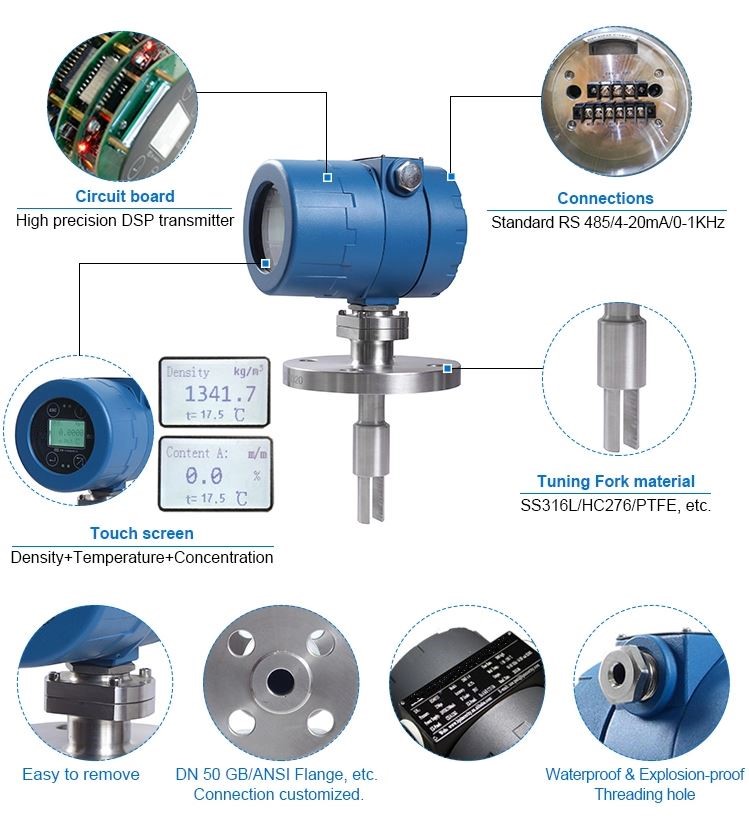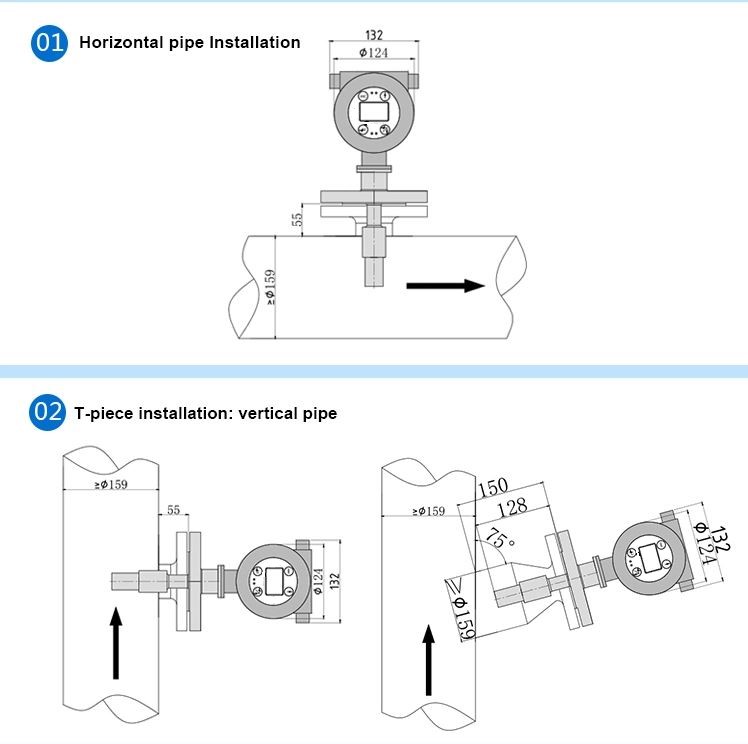Description
The Thermal Mass Meter is widely used devices for measuring the flow rate of gases or liquids in various industries. Also, these meters operate based on the principles of thermal conductivity and heat transfer. In this response, I will aim to provide a comprehensive description of thermal mass flow meters, along with their advantages, disadvantages, and the industries in which they find application.
Thermal mass flow meters consist of a sensor that measures the heat dissipation or cooling effect caused by the fluid passing through the meter. In addition, the rate of heat transfer is directly proportional to the mass flow rate. Also, by accurately measuring the change in temperature of the fluid and utilizing the heat transfer principle, these meters determine the flow rate.
Working Principle
Thermal mass flow meters work based on the principle of thermal conductivity. Also, the meter consists of a sensor or probe that contains two temperature sensors: one measures the fluid’s temperature and the other acts as a reference sensor. When the fluid flows through the meter, it comes into contact with the heated sensor. In addition, as the fluid absorbs heat from the sensor, it causes a temperature difference between the two sensors. finally, by analyzing this temperature difference, the meter determines the mass flow rate.
Sensor Types
There are two common types of thermal mass flow meters: Constant Temperature (CT) and Constant Heat (CH).
Constant Temperature (CT):
In CT thermal mass flow meters, the sensor heats up to maintain a constant temperature difference between the heated and reference sensors. Moreover, as the fluid flows, it absorbs some of the heat, and the power required to maintain the temperature difference changes. This power is proportional to the mass flow rate, allowing the meter to calculate the flow rate accurately.
Constant Heat (CH):
CH thermal mass flow meters operate by maintaining a constant heat input to the fluid. In addition, the temperature difference between the sensors is measured, and the flow rate is determined based on the amount of heat required to maintain the temperature difference.
Applications and Benefits
Thermal mass flow meters find applications in various industries due to their unique characteristics and benefits:
Gas Flow Measurement:
These meters are widely used for measuring the flow rates of gases, such as natural gas, compressed air, and various hydrocarbon gases. Furthermore, they provide accurate and reliable measurements for gas flow monitoring, custody transfer, and process control.
Liquid Flow Measurement:
Thermal mass flow meters can also measure the flow rates of liquids, making them suitable for liquid transfer and process applications. However, they are primarily preferred for measuring gas flow due to their thermal properties.
Direct Mass Flow Measurement:
One of the primary advantages of thermal mass flow meters is that they provide direct mass flow measurement without the need for additional calculations or conversions. This makes them highly accurate and eliminates the potential for errors associated with volumetric flow measurements.
Low Pressure Drop:
Thermal mass flow meters typically have a low pressure drop, meaning they cause minimal restriction to the fluid flow. In addition, this characteristic is especially crucial in applications were maintaining system efficiency and reducing energy consumption is important.
Wide Rangeability:
These meters offer a wide rangeability or turndown ratio, allowing them to measure flows from very low to extremely high velocities accurately. This flexibility makes them suitable for various flow rate requirements in different industries.
Low Maintenance:
Thermal mass flow meters are known for their durability and low maintenance requirements. They have no moving parts or obstructions that can impede the flow or require frequent maintenance, leading to reduced downtime and increased operational efficiency.
It’s important to note that the specific features and capabilities of thermal mass flow meters can vary depending on the manufacturer and model. Therefore, when selecting a thermal mass flow meter for a particular application, it’s essential to consider factors such as flow range, fluid properties, accuracy requirements, and environmental conditions to ensure optimal performance.
Insertion style Thermal Mass Meter:
Include a sensor & probe assembly that is inserted into the process gas flow conduit to allow the process gas to flow across the flow sensing elements. Our insertion style flow meters are available with 3/4″, or 1″ OD probes. Tube fittings and ball valve retractor assemblies, with or without a mounting flange, are also available from the factory as options. The tube length must be specified upon ordering. For other probe diameters and lengths, please consult the factory.
Integral style Thermal Mass Meter
have all of the electrical components and connections located within one enclosure. The enclosure is mounted directly to the insertion probe assembly at the point of measurement. The enclosure includes all of the electrical connections as well as the linearizing electronics and the display/keypad assembly.
Thermal mass meter uses the principle of convective heat transfer to directly measure mass flow. ProFlow’s proprietary thermal mass flow sensors use two ratiometrically matched, reference-grade platinum Resistance Temperature Detectors (RTDs). The platinum sensing element wire is encapsulated in a 316 Stainless Steel sheath or, if specified, a Hastelloy C sheath. Our microcontroller operated smart sensor technology preferentially heats one RTD; the other RTD acts as the temperature reference. The process gas flow dissipates heat from the first RTD, causing an increase in the power required to maintain a balance between the RTDs. This increase is directly related to the gas molecular rate of flow. Our sensors are temperature compensated for a wide process gas temperature range and insensitive to pressure changes, so the output signal is a true mass flow rate signal.
In conclusion, thermal mass flow meters offer several advantages, including a wide range of measurements and direct mass flow measurement. Other advantages are low pressure drop, high accuracy, and compatibility with various fluids. However, they also have limitations related to gas composition changes, initial cost, and dependency on fluid properties. Finally, these flow meters find applications in diverse industries such as oil and gas, chemical and petrochemical. Other industries are HVAC systems, pharmaceutical and biotechnology, and food and beverage. This is contributing to efficient and reliable flow rate measurements throughout these sectors.
Do you wish to purchase a Thermal Mass Meter?







Reviews
There are no reviews yet.